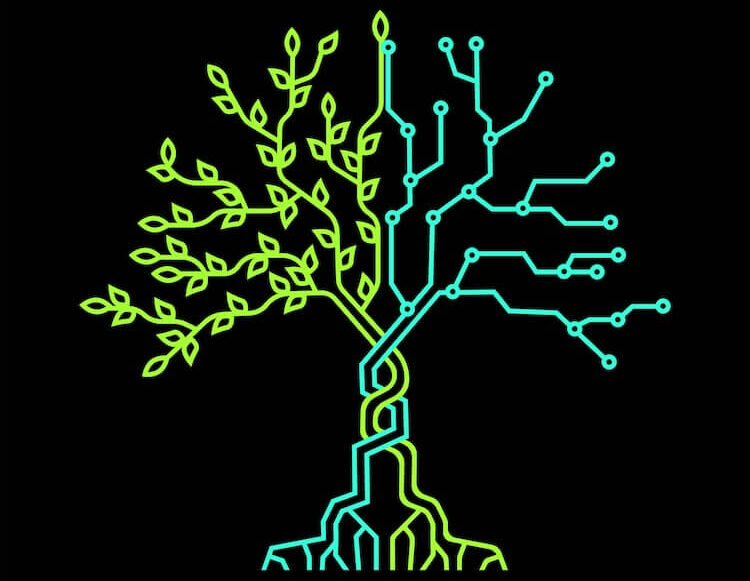
Merkle Tree in Blockchain: What is it, How does it Work and Benefits
- Jakob Brezigar
- Last updated: 25. January 2024
- Reading time: 6 min
Welcome to the quirky world of Merkle Trees, where branches don’t need watering, and the leaves are purely digital! Imagine a tree that’s less about nature and more about securing the vast forest of blockchain data.
In this article, we’re going to unravel the mystery of the Merkle Tree in blockchain. Think of it as a super-smart way to organize and check data. We’ll explore how it works, kind of like a detective solving a puzzle, but instead of clues, we have hashes. And then, we’ll dive into its role in blockchain, where it’s like a superhero, ensuring every transaction is safe and sound. So, buckle up for a fun ride into the world of Merkle Trees, where every leaf tells a story, and the roots hold the secrets of blockchain security! 🌳💻🔍

Table of Contents
What is a Merkle Tree?
A Merkle Tree is a data structure used in computer science and cryptography. It’s like a tree made of digital data, where each leaf is a piece of data, and each branch is a summary of the leaves below it. This structure helps quickly and securely check if a piece of data is part of a set.
How is a Merkle Tree used in Blockchain?
In blockchain, Merkle Trees summarize all transactions in a block into a single hash, the Merkle Root. This allows for efficient verification of transactions without checking each one individually, saving time and resources in large networks like Bitcoin.
Why are Merkle Trees important?
Merkle Trees are important because they provide a secure and efficient way to verify large sets of data. They are crucial in blockchain for validating transactions and ensuring data integrity, which is key for maintaining trust and security in decentralized systems.
Key Takeaways
Merkle Trees are unique data structures that efficiently organize and secure digital data using a tree-like hierarchical system.
Each leaf in a Merkle Tree represents a data block, while branches summarize the information of the leaves beneath them.
In blockchain, Merkle Trees play a crucial role by summarizing all transactions in a block into a single, verifiable hash.
The use of Merkle Trees in blockchain enhances data integrity and security, making transaction verification faster and more resource-efficient.
Understanding Merkle Trees is essential for grasping how blockchain technology maintains trust and accuracy in decentralized digital transactions.
Amazon's AWS DynamoDB: A Non-Blockchain Use Case for Merkle Trees
In the realm of distributed databases, Amazon’s AWS DynamoDB stands out as a prime example of non-blockchain application of Merkle Trees, showcasing their versatility beyond cryptocurrency contexts. DynamoDB utilizes Merkle Trees to ensure data consistency across its vast, distributed network, enabling quick detection and efficient resolution of discrepancies. This approach significantly reduces the network load by allowing selective synchronization of only the divergent data, rather than the entire dataset. Furthermore, Merkle Trees aid in incremental repairs and version control, crucial for managing large datasets and concurrent updates. This innovative use not only enhances DynamoDB’s performance and scalability but also underscores the adaptability of Merkle Trees in diverse technological landscapes, far beyond their traditional blockchain associations.
What is Hash Function
A hash function is a fundamental concept in computer science and cryptography. It’s a process that takes input data of any size and produces a fixed-size string of characters, typically a sequence of numbers and letters.

This output, known as a hash, is unique to each distinct input. The beauty of a hash function is its consistency: the same input will always produce the same hash. However, even a minor change in the input data results in a dramatically different output. This characteristic makes hash functions incredibly useful for data verification and security.
Cryptographic Hash Functions
Cryptographic hash functions are specialized versions of hash functions, designed with specific properties to secure data. They are deterministic, meaning they consistently produce the same hash for the same data. They are also pre-image resistant, making it computationally infeasible to reverse the hash to find the original input.

Additionally, they are collision-resistant, which means it’s highly unlikely (though not impossible) for two different inputs to produce the same hash. These properties make cryptographic hash functions ideal for securing data in various applications, including blockchain technology.
Leaf Node: What is It?
At the Merkle tree’s base are the leaf nodes, each representing an individual transaction within a block. The data within these leaf nodes undergoes hashing, linking each transaction to the tree’s larger structure. This base level, comprising multiple leaf nodes, is where the intricate process of building the Merkle tree begins.

What is root hash
The root hash, also known as the Merkle Root, is the single hash at the top of a Merkle Tree. It is derived by repeatedly hashing pairs of nodes (starting from the leaf nodes) until only one hash remains. This root hash is a digital fingerprint of all the data beneath it, encapsulating the entire set of transactions or data blocks in a blockchain. The root hash is crucial for verifying the integrity of the entire tree without needing to examine each individual node.

Hash tree
A hash tree, synonymous with a Merkle tree, is a tree where each non-leaf node is a hash of its child nodes. This structure creates a map of data blocks, maintaining their tamper-evident nature and allowing for quick verification processes. The hash tree’s implementation in blockchain technology is a testament to its effectiveness in managing and verifying large data sets efficiently.

Working of Merkle Trees
Merkle Trees work by summarizing all the transactions in a block into a single hash, known as the Merkle Root. This process starts at the leaf nodes, where each transaction is hashed. These hashes are then paired, and each pair is hashed together to form the hashes of the parent nodes. This process is repeated up the tree, layer by layer, until a single hash remains at the top – the Merkle Root.

This method ensures that the entire tree can be represented and verified by just the root hash, making Merkle Trees an efficient data structure for large datasets.
Merkle Trees, Also Called Hash Trees, are an Imperative Component of Blockchain Technology, Ensuring the Secure and Efficient Verification of Data
Merkle Trees are a cornerstone in the architecture of blockchain technology. They provide a means to securely and efficiently verify large amounts of data. In a blockchain, each block contains a set of transactions, and the Merkle Tree summarizes these transactions into a single hash, the Merkle Root, which is stored in the block header.

This structure allows nodes in the network to quickly verify whether a particular transaction is included in a block without needing to download the entire block, thus saving bandwidth and improving the overall efficiency of the network.
Use-Cases of Merkle Tree in Blockchain
Merkle Trees have several use-cases in blockchain technology. They are primarily used to summarize and verify the data in blocks. For instance, in the Bitcoin network, the Merkle Tree allows nodes to verify whether a specific transaction is included in a block without needing to download the entire block. This is particularly useful for light clients that do not have the capacity to store the entire blockchain.

Merkle Trees also enhance the security of the blockchain by ensuring that any alteration in the transaction data will result in a different Merkle Root, thus detecting any tampering attempts.
Merkle Proofs
Merkle proofs are vital in blockchain technology, offering a way to verify the presence of a specific transaction within a block without needing the entire blockchain. This feature is fundamental to blockchain’s scalability and practical application.
By using a Merkle proof, one can efficiently demonstrate that a transaction is part of a block by providing a path of hashes from the transaction to the Merkle root. This process significantly reduces the amount of data required for verification, making Merkle proofs an indispensable tool in the blockchain framework.

Quick summary
Merkle Trees, or hash trees, play a pivotal role in blockchain technology, offering a secure and efficient way to verify large datasets. They utilize cryptographic hash functions to create a tree-like structure where each leaf node is a hash of data, and the root node is a hash of all the data. This structure is crucial for maintaining the integrity and security of blockchain networks, allowing for quick verification of large data sets without the need for extensive resources.
The use of Merkle Trees in blockchain exemplifies how efficient data structures can revolutionize the way we handle and verify digital information.
Consult with us at Orcabay.
FAQs on Merkle Tree
What is a Merkle Tree?
A Merkle Tree is a data structure used in computer science and cryptography. It’s like a tree made of digital data, where each leaf is a piece of data, and each branch is a summary of the leaves below it. This structure helps quickly and securely check if a piece of data is part of a set.
How is a Merkle Tree used in Blockchain?
In blockchain, Merkle Trees summarize all transactions in a block into a single hash, the Merkle Root. This allows for efficient verification of transactions without checking each one individually, saving time and resources in large networks like Bitcoin.
Why are Merkle Trees important?
Merkle Trees are important because they provide a secure and efficient way to verify large sets of data. They are crucial in blockchain for validating transactions and ensuring data integrity, which is key for maintaining trust and security in decentralized systems.
Disclaimer: The information provided in this article is for informational purposes only and does not constitute financial, investment, or other professional advice. All opinions expressed herein are solely those of the author and do not represent the views or opinions of any entity with which the author may be associated. Investing in financial markets involves risk, including the potential loss of principal. Readers should perform their own research and consult with a licensed financial advisor before making any investment decisions. Past performance is not indicative of future results.

Jakob Brezigar
Jakob, an experienced specialist in the field of cryptocurrency market making, boasts an extensive international presence. With Orcabay, he has skillfully managed major operations and deals for a wide array of global stakeholders.



